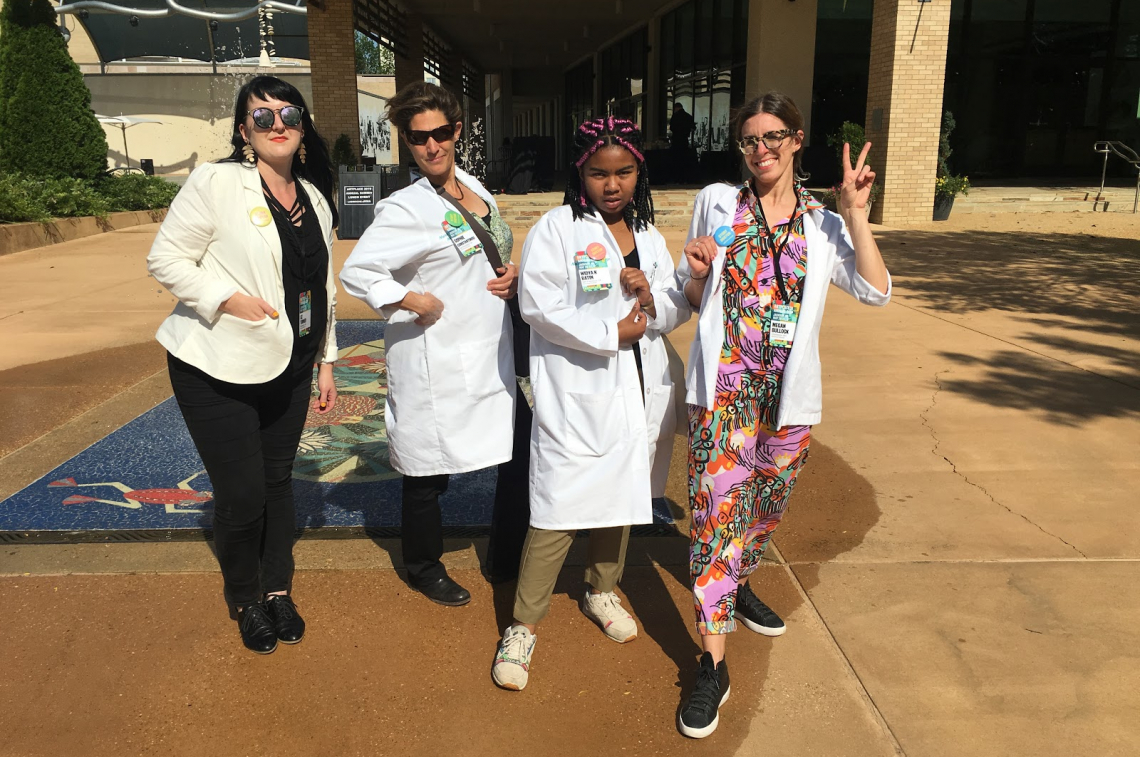
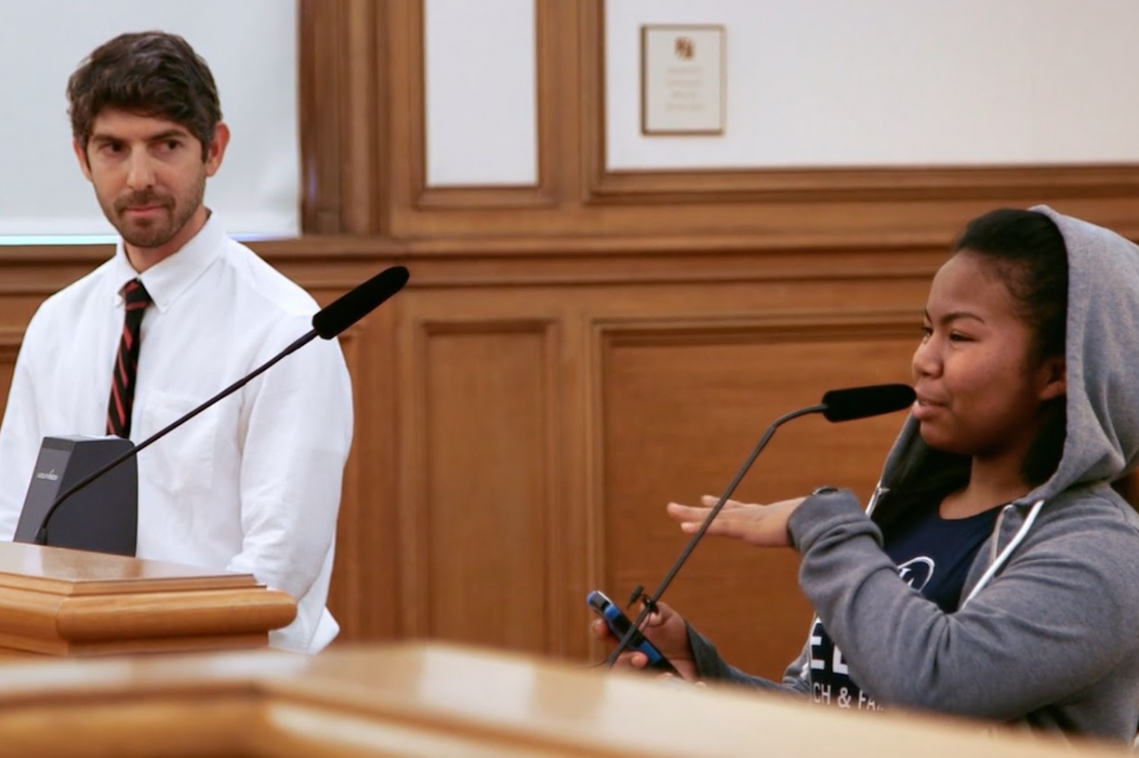
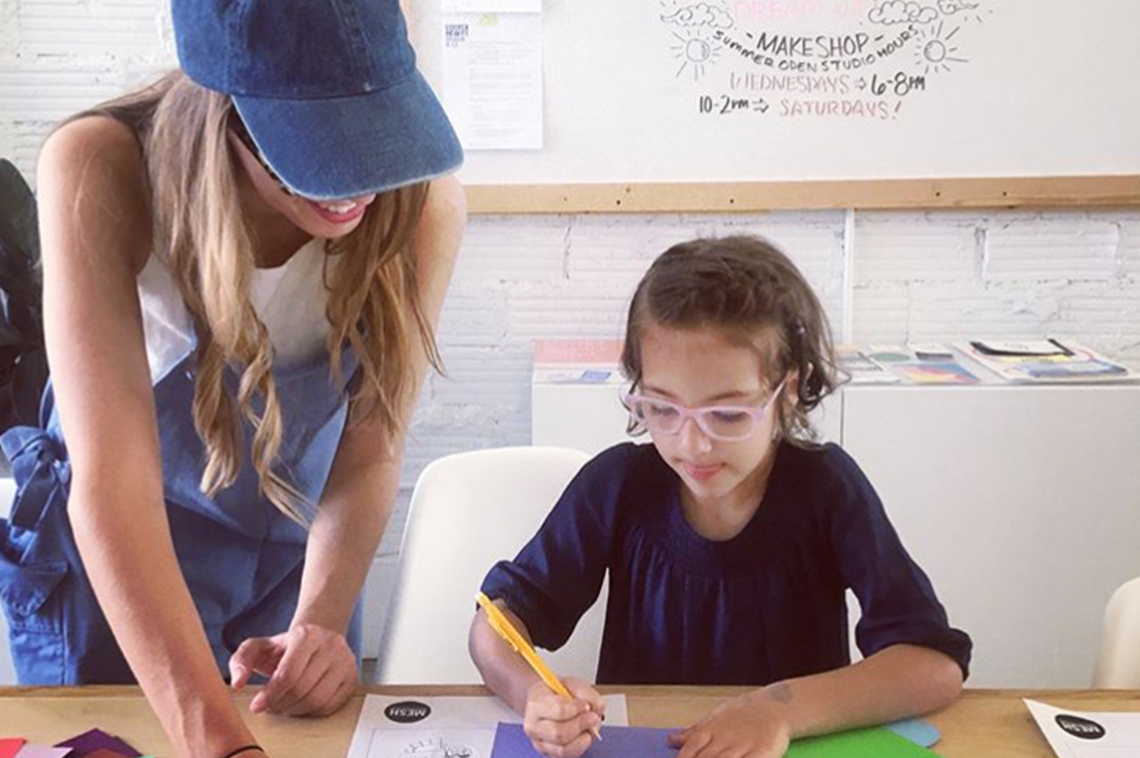
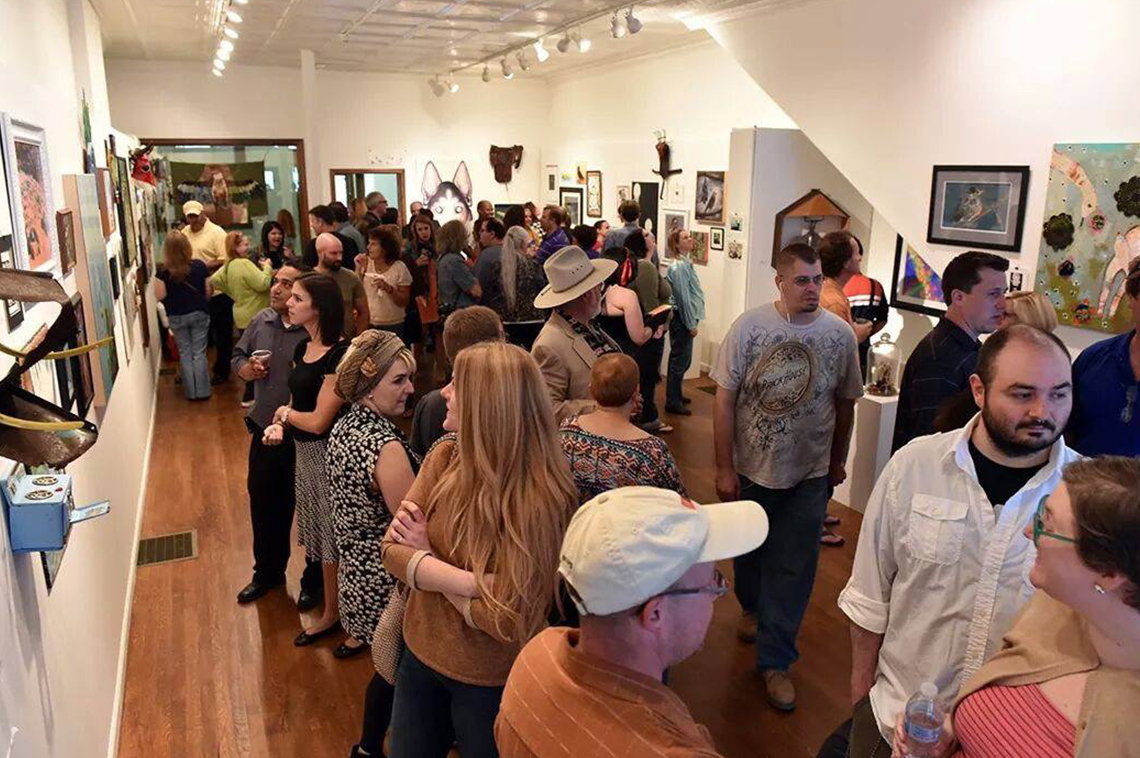
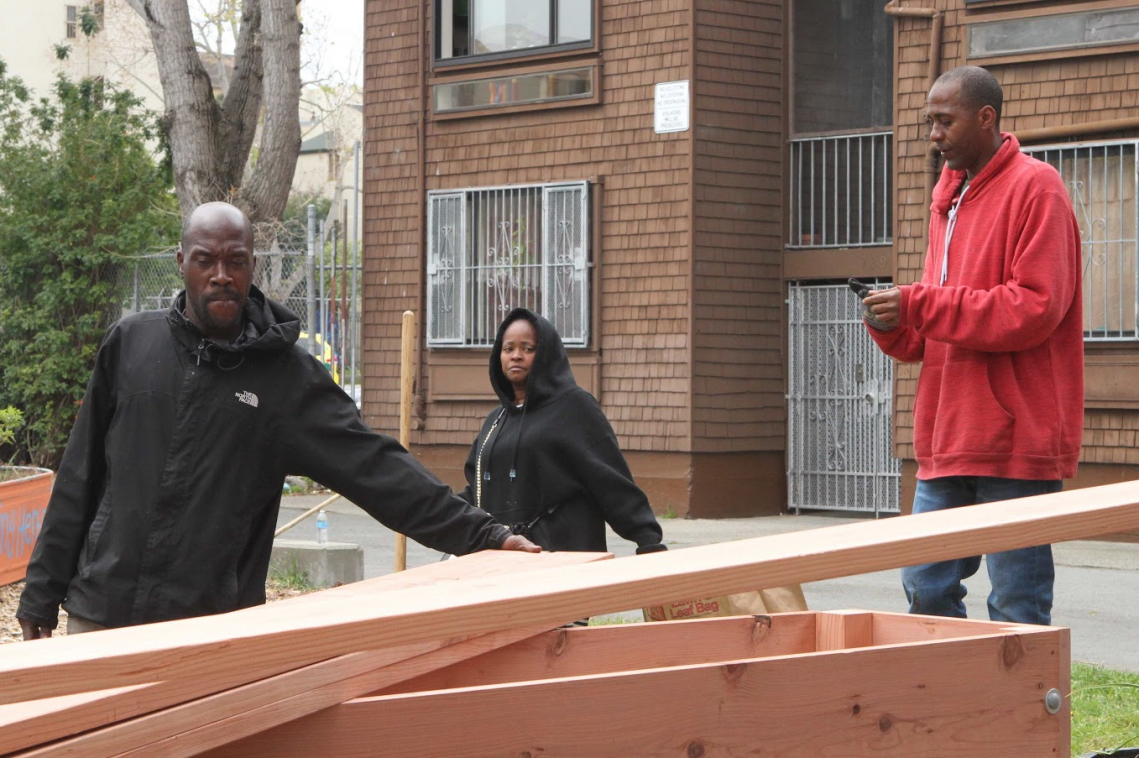
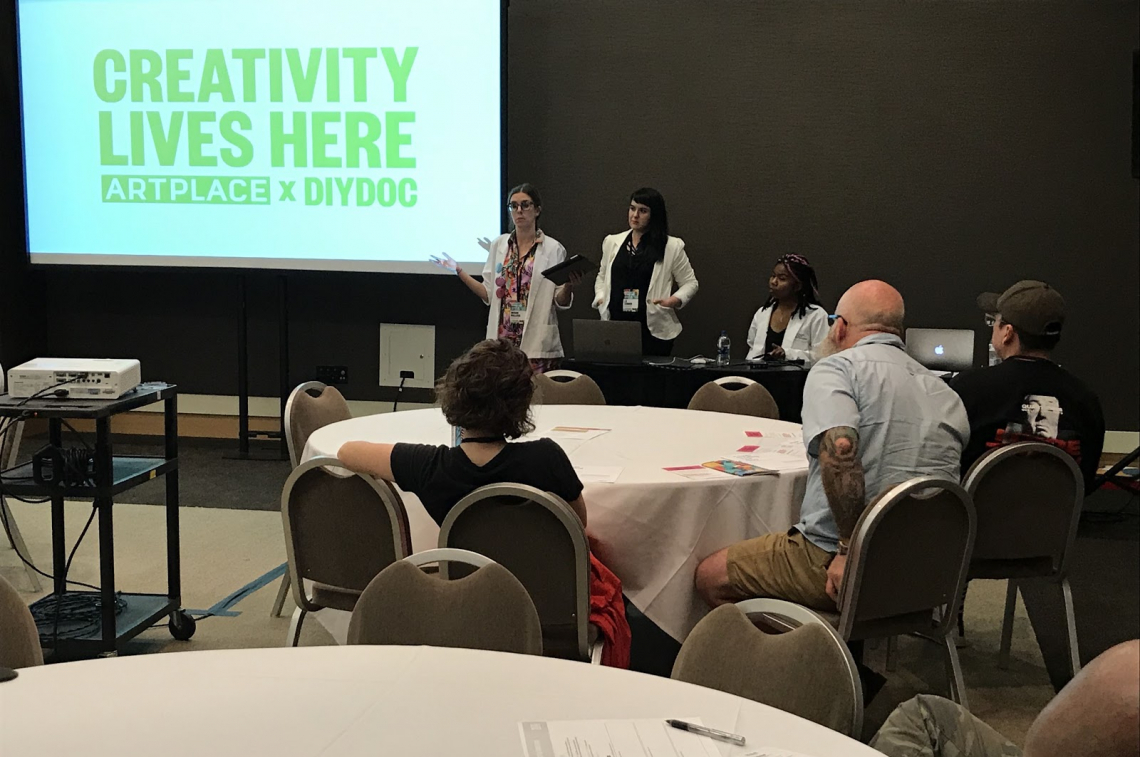
At the ArtPlace 2019 Annual Summit—held May 20 - 22 in Jackson, Mississippi—the Break Room offered attendees a time and place to make quick, informal connections: some with a stated purpose, others totally impromptu. In one part of the room, four Story Doctors set up shop to help diagnose and treat participants’ ailing stories. Below, they share four of their top prescriptions for getting any story into the best shape of its life.
Stories are part of the fabric of our society. Stories connect us, inform us, and inspire us. A well-told story can transform the way we relate to one another: it can break stereotypes, build empathy, and fuel change.
We are all storytellers and authors of our narratives if we let ourselves be.
But telling a good story isn’t always easy. And telling a succinct story is an art.
In the chilly conference rooms in Jackson, Mississippi, we gathered with friends and allies who all care about telling the story of creative placemaking. For some of us, it has become creative placekeeping; for others it is struggling to make place. At an ArtPlace Summit, we all have something in common: the desire to share our stories so that together they might fortify us for another year, another round of grant cycles, another series of commission hearings and town hall meetings. So how can we tell our stories with brevity and gravitas, with grace and beauty, so that outsiders understand the magic of our work?
Four of us donned white lab coats with cheerful buttons identifying ourselves as the Story Doctors. From San Francisco, California, to Charleston, West Virginia, our mission was to share tips and suggestions for you, our artistic kinfolk, to refine and clarify your stories.
Widya Batin, Youth Leader from the Buchanan Mall project, and I—Citizen Film co-founder Sophie Constantinou—focused on documentary storytelling tips. Megan Bullock, creative director and founder of MESH design & development, and Elizabeth Turner—fine artist and co-director of Apartment Earth Gallery, also from MESH—focused on the storytelling interface with DIYdoc as part of the ArtPlace Creativity Lives Here campaign.
Here are our top four suggestions.
Tip number one: Find your purpose
Oftentimes, stories from the media can be prescribed and one-dimensional. People-driven storytelling is a powerful tool to tell alternative narratives and dispel stereotypes. When Megan talks about Appalachia, she tells the stories too often unheard. Instead of focusing on poverty, bigotry, and an unbridled opioid epidemic, she tells the stories of West Virginia’s growing LGBTQ movement, the black poets of Affrilachia, and the artists and creative leaders crafting a new future in the mountains. New narratives drive her sense of purpose in her storytelling.
Tip number two: Identify your audience
While stories can change the hearts and minds of many, it's important to consider your audience. Widya knew when she started preparing her remarks for the San Francisco Recreation and Parks Department Commission, she needed to consider that these city leaders don’t get down to her block very often, if at all. So painting an intimate and clear picture of her neighborhood with words and images was a must for this audience.
Tip number three: Show instead of telling
A picture speaks a thousand words. When Elizabeth converted an abandoned garage to create a pop-up art gallery and shared studio, she began a revolution for emerging artists in West Virginia. Rather than using too many words to tell the story, a camera is her storytelling tool to take you through the gallery. Visually documenting the interactions of people and artists gathering, sharing, and making speaks volumes.
Tip number four: Find your fact
If you have powerful data, don’t be afraid to use it. But too much data is often too much to digest. When Sophie talks about pressing workforce development issues, one simple statistic tells a palpable story. When a city with an overall unemployment rate of 2.3 percent has a 17 percent unemployment rate among African Americans in a particular neighborhood, it is an actionable problem and quickly defines the situation’s urgency and inequity.
Further reading:





